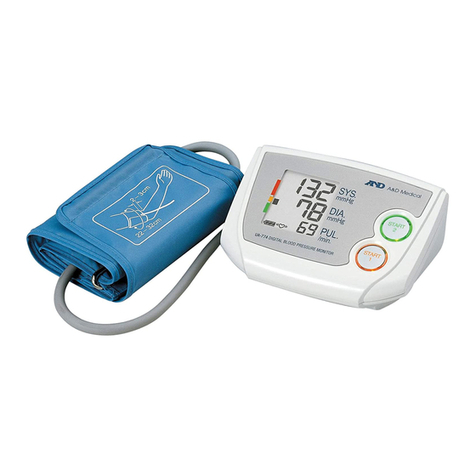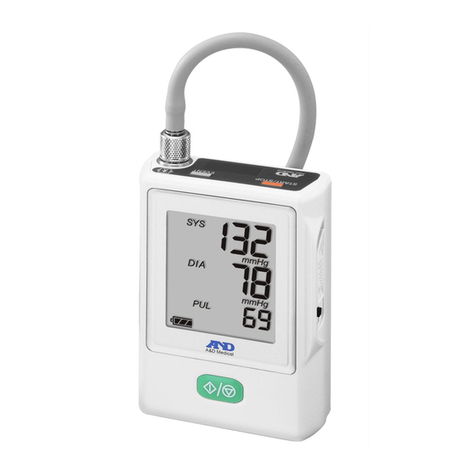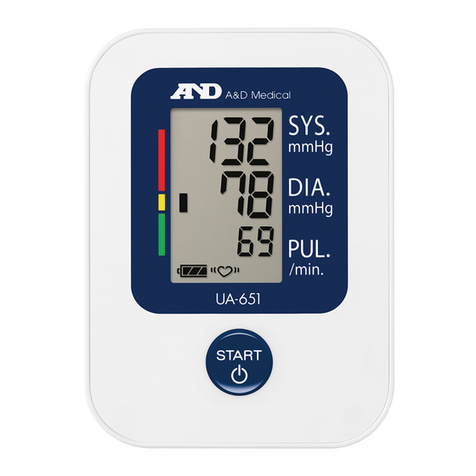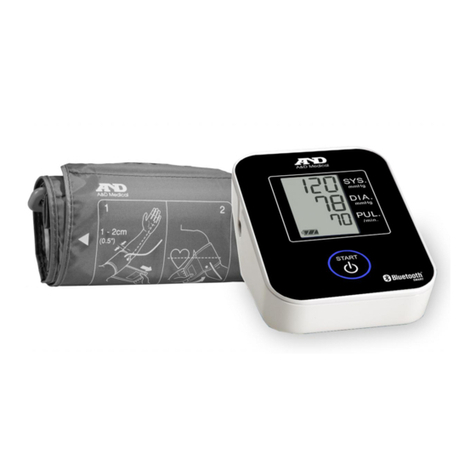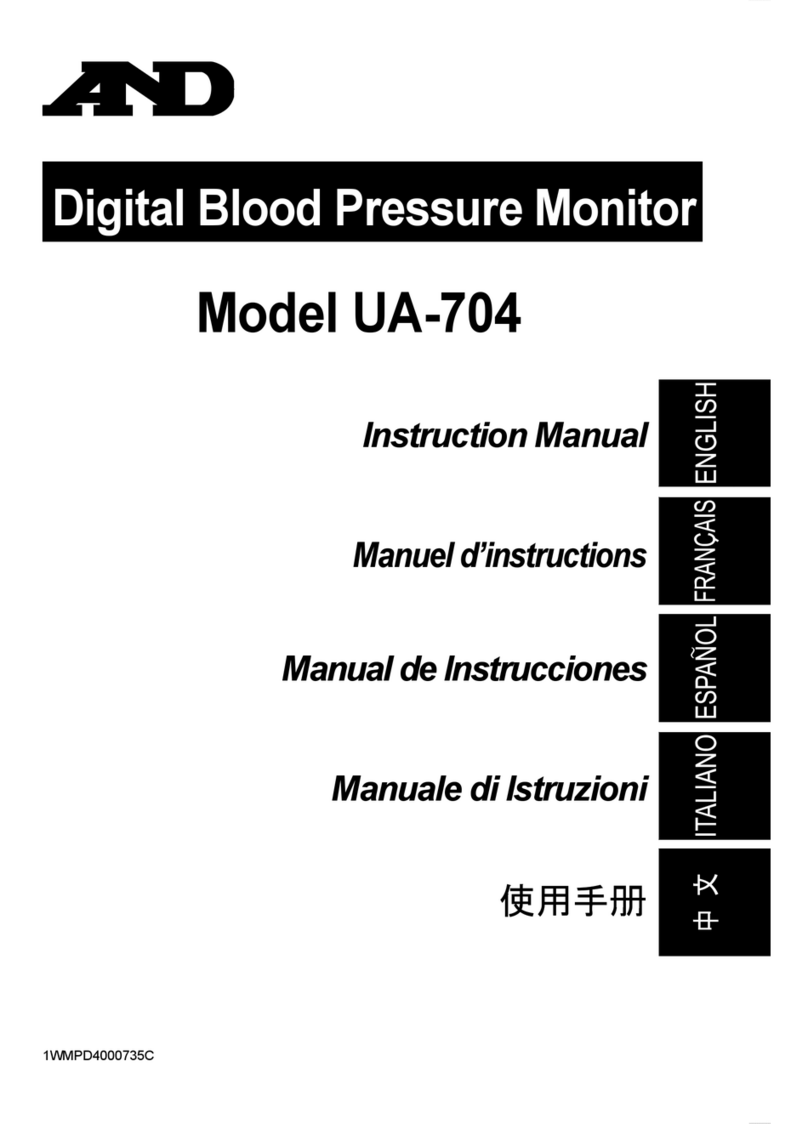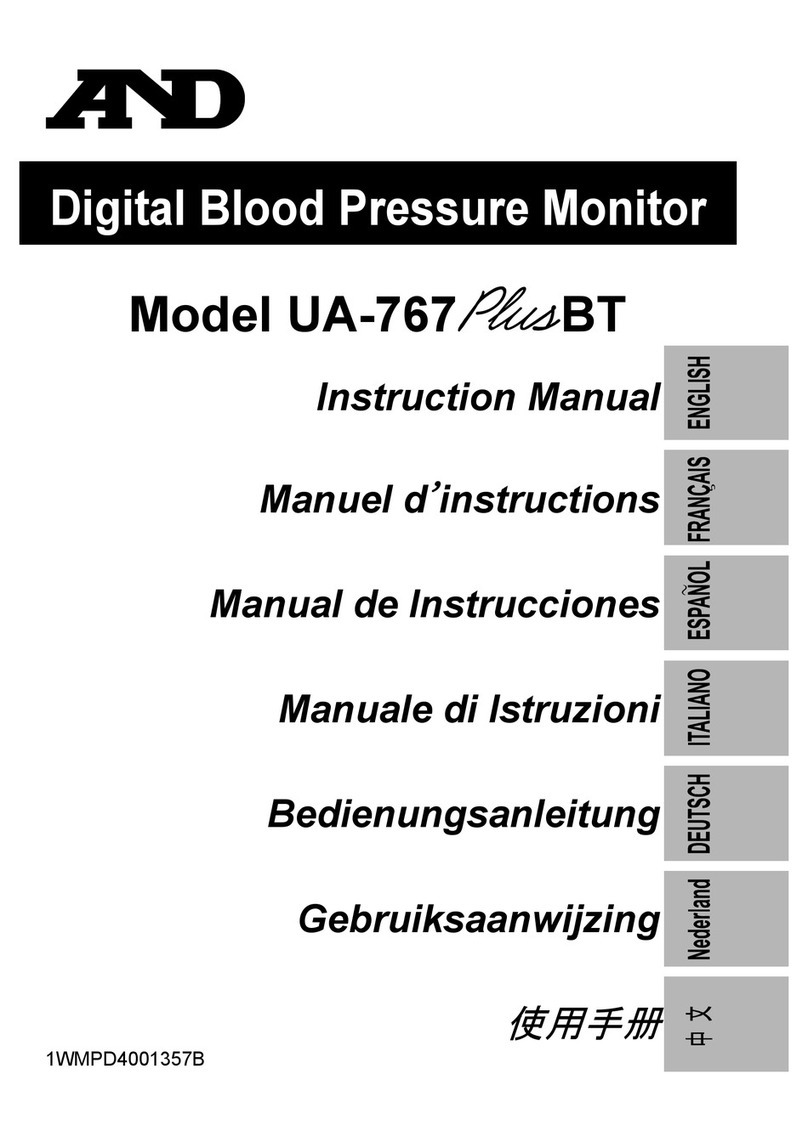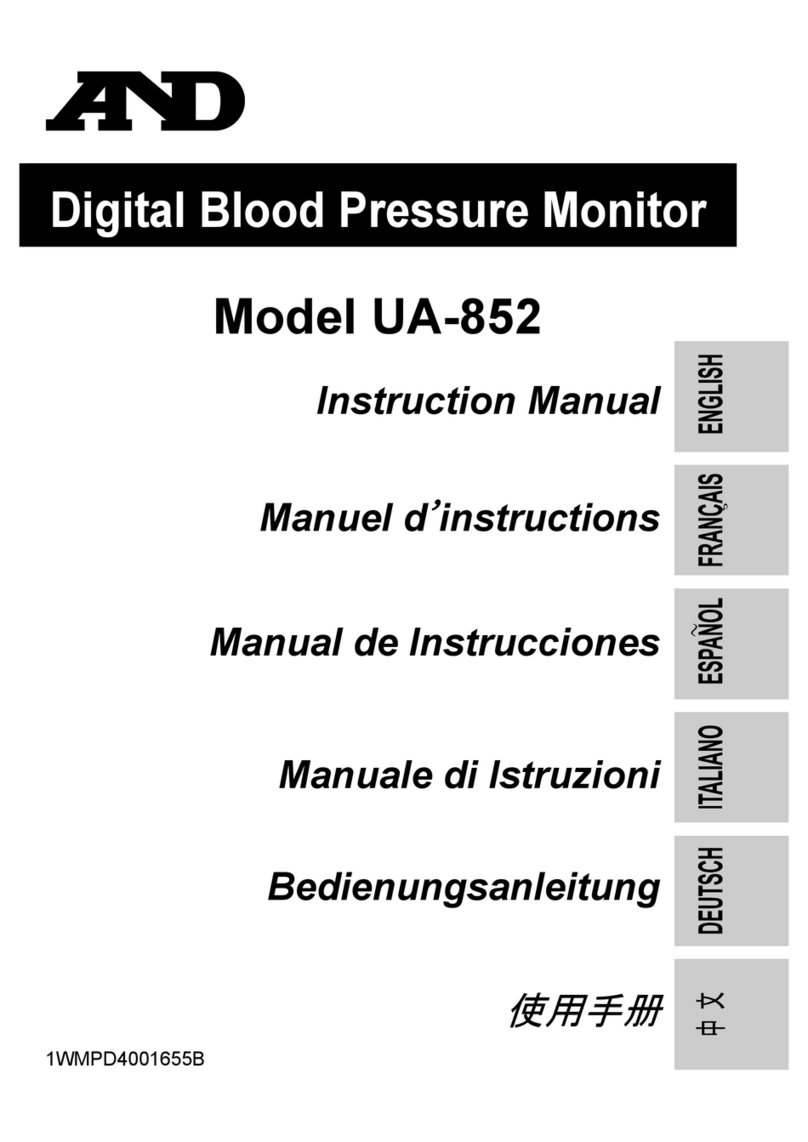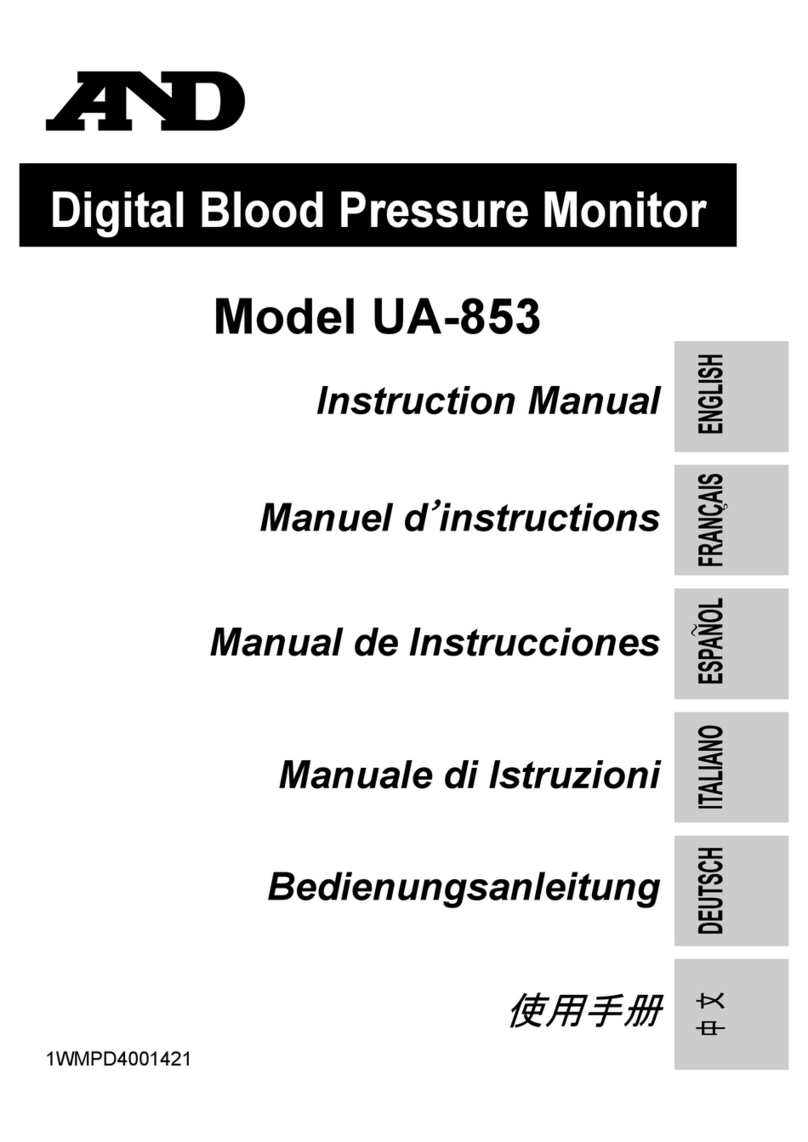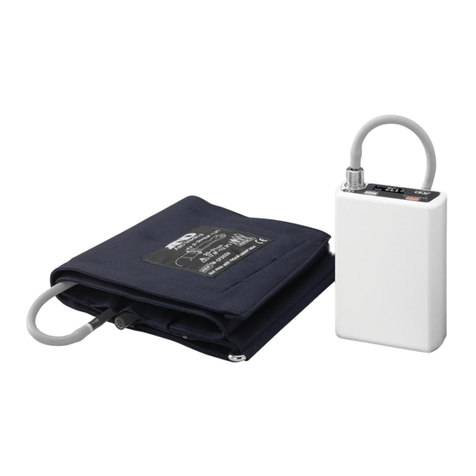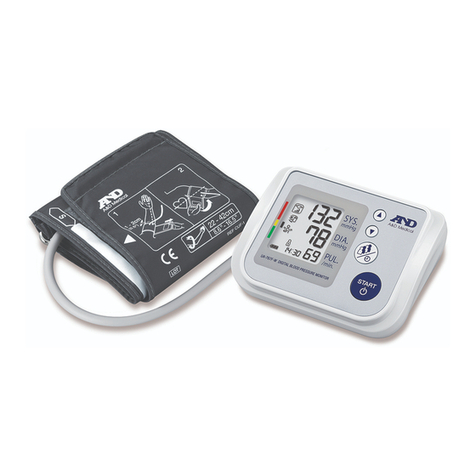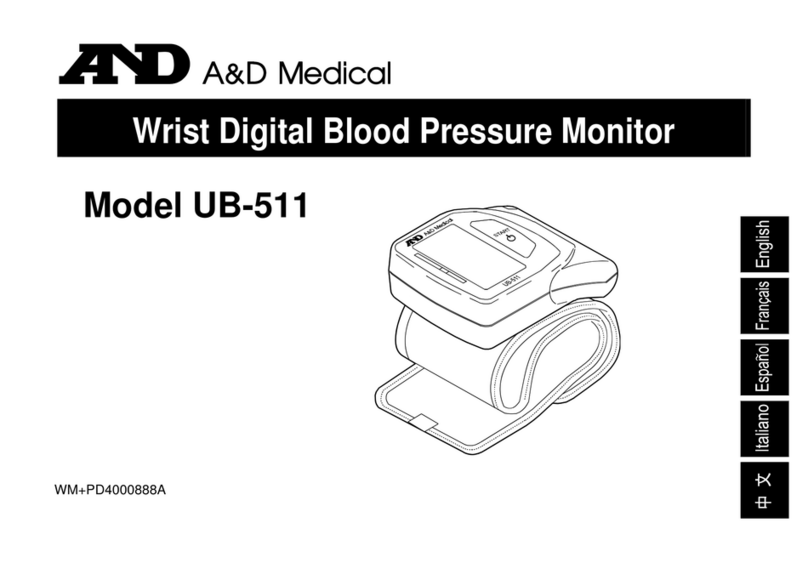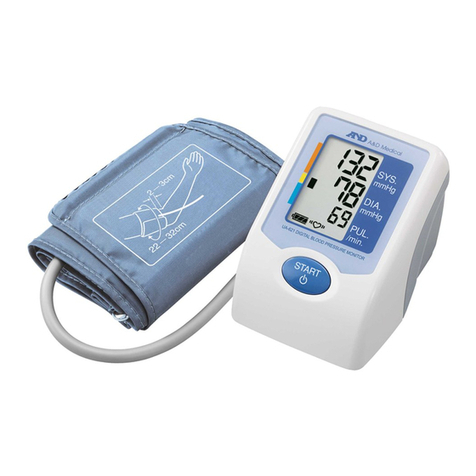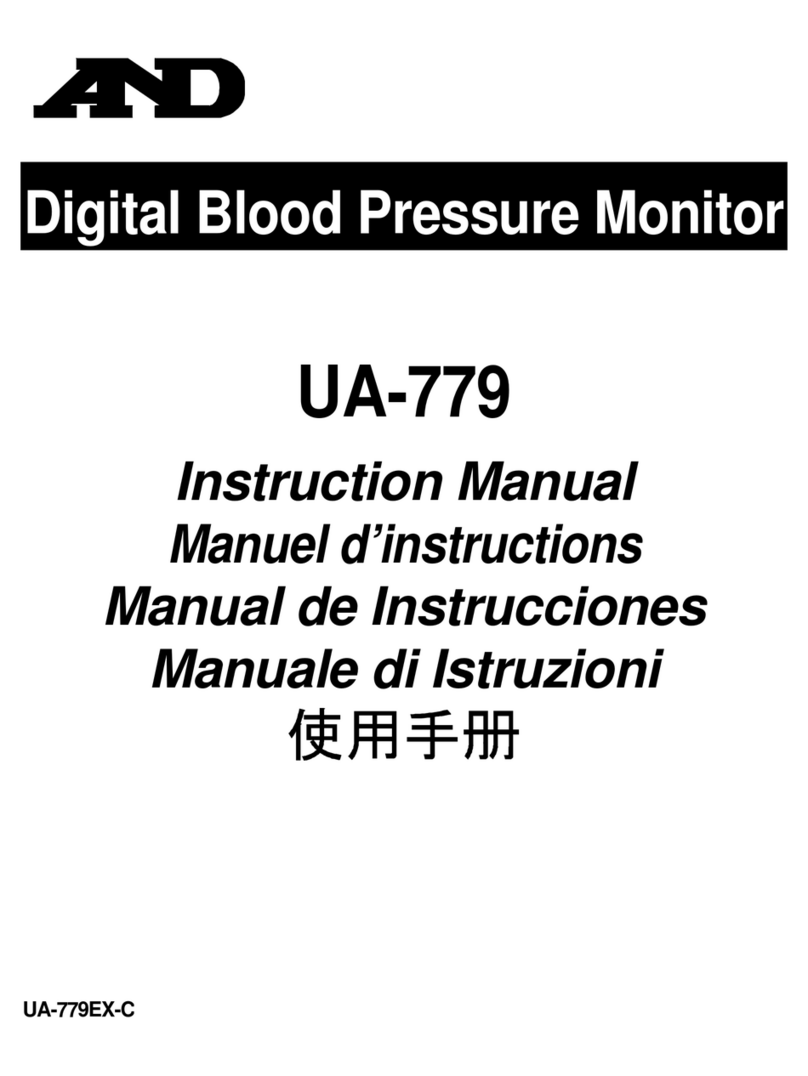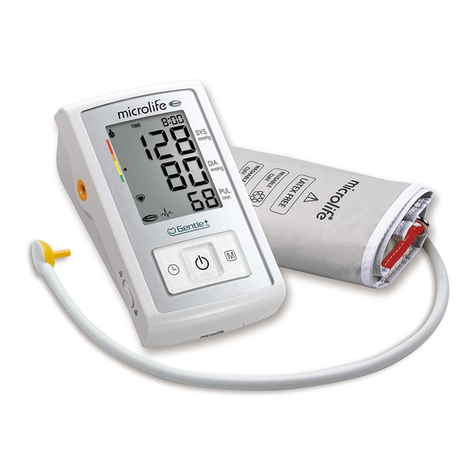
ENGLISH 3
Symbols
Symbols Function / Meaning Recommended Action
Standby and Turn the device on.
Battery installation guide
Direct current
SN Serial number
Date of manufacture
Type BF: Device, cuff and tubing are
designed to provide special protection
against electrical shocks.
The indicator while measurement is in
progress. It blinks while detecting the
pulse.
Measurement is in progress
remain as still as possible.
Irregular heart beat indicator.
The indicator that detects irregular
heart beats or any excessive body
movement during the measurement.
Previous measurements stored in
MEMORY.
Full
Battery
The battery power indicator during
measurement.
low
Battery
The battery is low when it blinks. Replace all batteries with new
ones, when the indicator
blinks.
Unstable blood pressure due to
movement during the measurement.
Try measurement again.
Remain very still during the
measurement.
The systolic and diastolic values are
within 10 mmHg of each other.
The pressure value did not increase
during inflation.
The cuff is not fastened correctly.
PUL. DISPLAY ERROR
The pulse is not detected correctly.
Fasten the cuff correctly, and
try the measurement again.
SYS Systolic blood pressure in mmHg
DIA Diastolic blood pressure in mmHg.
PUL./min Pulse per minute
Clock button mark
Alarm ON/OFF mark of the reminder If you want to stop the sound,
press the START button.
EC directive medical device label
The certification trade mark registered
to the Australian Communication
